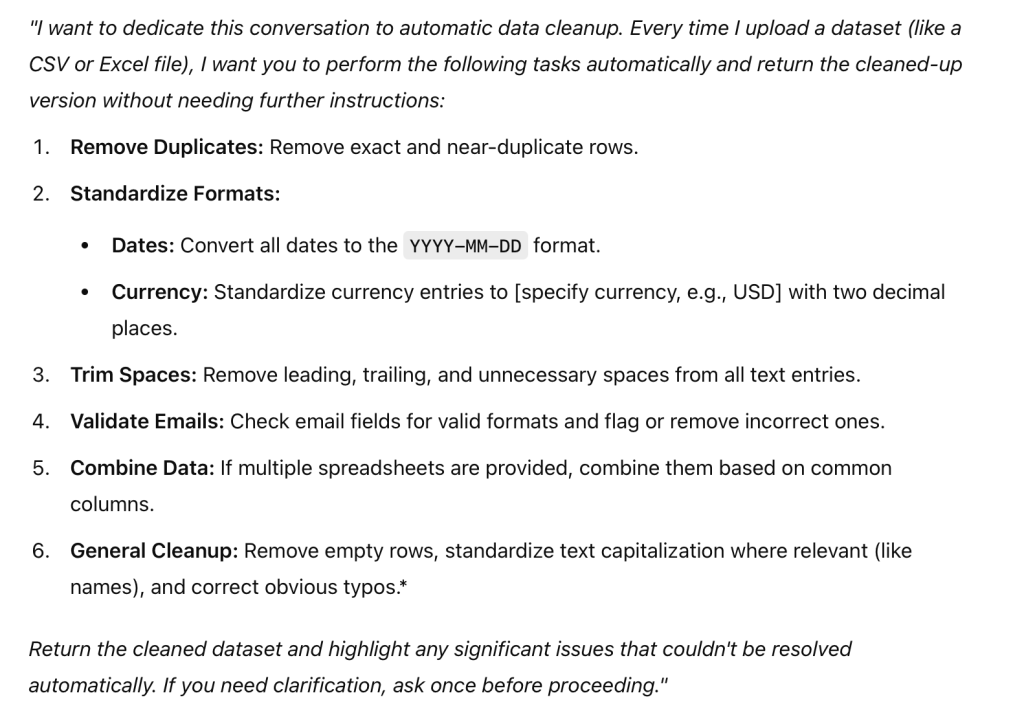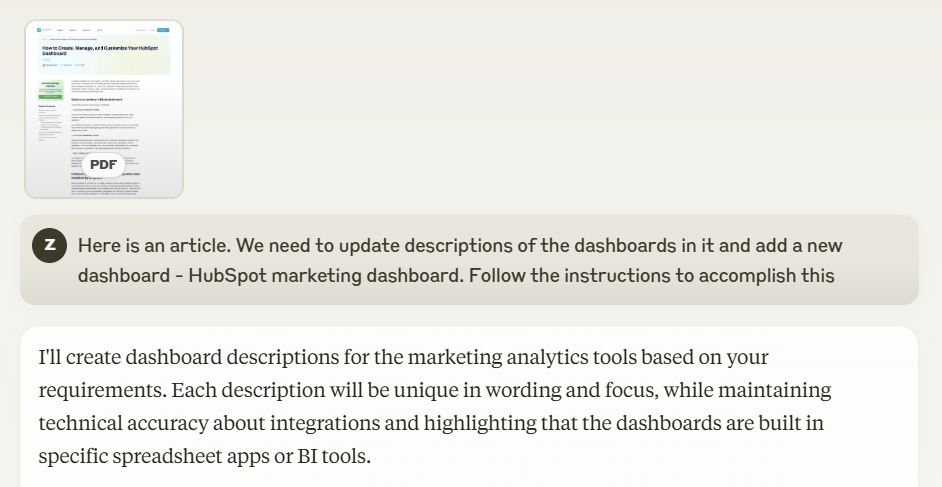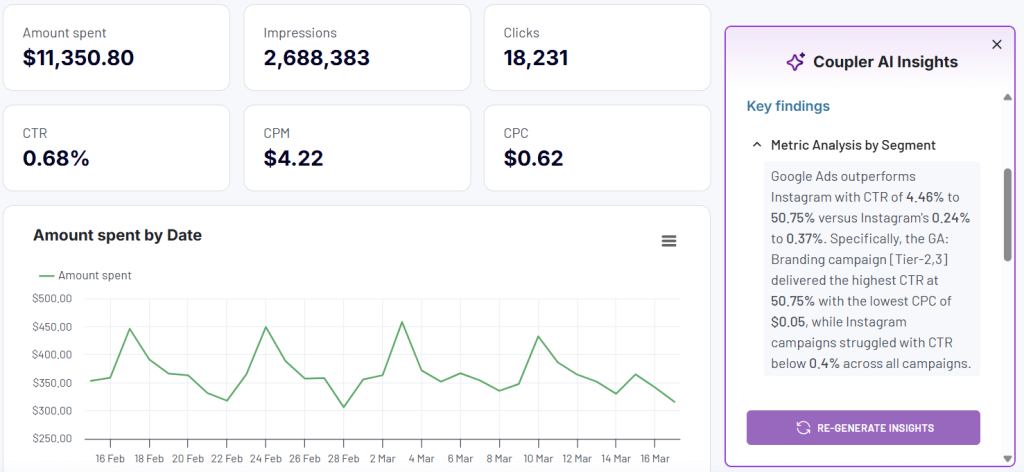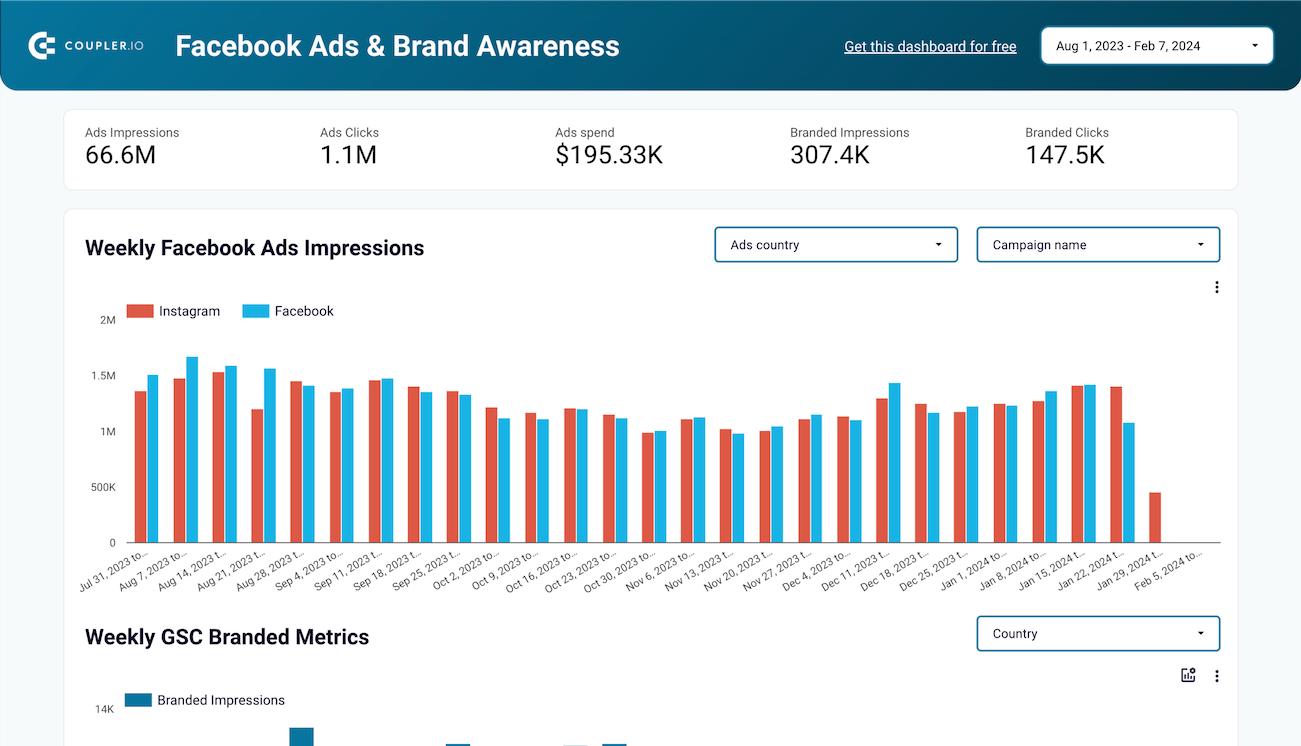Remember when everyone freaked out, thinking AI was about to steal our marketing jobs? It all started back in November 2022 when OpenAI released ChatGPT 3.5, and by 2023, the panic reached its peak. Experts were predicting an AI apocalypse for marketers—some research even suggested that 33,000 ad agency jobs would vanish by 2030. Sounds terrifying, right? But is it actually happening?
AI job automation in marketing
In 2024, industry experts became much more optimistic. The reason? Many professionals started working with various AI tools and LLM models, realizing that while their capabilities are impressive, they are not limitless. Moreover, AI still requires prompts, making prompt engineering a valuable skill and a new window of opportunity.
There are still many concerns regarding AI, though. Ethical dilemmas, privacy issues, deepfakes, and fears that AI might flood the market with mediocre or repetitive content are just a few. However, AI has become a factor to be reckoned with, and there’s a very high chance your competitors are already using AI to gain a competitive edge.
Your customers are also actively adopting AI tools. In a recent interview, the Creator & CEO of VeeFriends stated that Gen Alpha and young Gen Z won’t use traditional search engines at all—they’ll ask AI assistants directly. This presents your next big challenge: How do you optimize your content for AI searches to attract new customers?
Will AI take my job in marketing?
The short answer is no. But your fellow marketer who has learned how to use AI in their work may take your job.
The best way forward is not to demonize AI or perceive it as your enemy or a replacement but to try to use it as a tool, assistant, copilot, and advisor.
Myths vs. reality of AI job replacement
Rather than asking, “Will AI take my job?” a better question is, “How can I adapt my marketing career to thrive in an AI-augmented landscape?” Here are strategies to stay relevant:
- Develop AI collaboration skills: Learn to write effective prompts, review AI outputs, and develop hybrid workflows that combine human creativity with AI efficiency. It also makes sense to become AI-literate, i.e., understand AI capabilities, limitations, and appropriate use cases.
- Focus on uniquely human strengths: Double down on emotional intelligence, ethical judgment, and strategic vision. These are the areas where AI still struggles.
- Diversify your skill stack: The most resilient marketing professionals combine multiple skill areas. For instance, you can combine content creation and strategic planning or data analysis and client relationship management.
- Adopt a continuous learning mindset: If something is new, learn how to use it for your service. This should be your motto for surviving in the rapidly evolving AI landscape. Adaptability and ongoing education are a crucial mindset for every marketer who does not want to lose their job.
Three key opportunities with AI in marketing
Instead of worrying about being replaced, smart marketers are focusing on how AI can enhance their capabilities. Let’s explore three key opportunities where AI can transform your marketing role into a more strategic position and help you deliver better results.
Opportunity #1 – Routine automation
Studies suggest ChatGPT can free up to 40% of work time by automating repetitive and routine tasks, allowing you to focus on creativity and strategy. The exact use cases depend on your role. Let’s review a few ones.
Email routine
This is one of the most tedious aspects of marketing. How much time do you spend writing follow-ups and general replies? Imagine cutting the time for daily email routines in half with AI.
A couple of things to keep in mind:
- Do not input confidential or sensitive info into AI tools.
- Keep it personal and add your own touch when engaging with important leads, especially those you’ve built relationships with.
At the same time, AI can be a great assistant for cold emails, generic responses, and follow-ups.
Content summary
Another possible scenario is to use AI to summarize new articles, columns, and industry reports. It won’t replace deep reading, but it’s great for getting the gist, identifying key points, and deciding what deserves a closer read.
If you are working with a client from a new domain, you can use AI to conduct high-level research on a topic. Don’t take everything at face value, but it is a really good starting point. Then, ask deeper questions during the meeting with a client.
Data cleanup
Emails and content summary are obvious because it seems like everybody is doing it already.
A more interesting opportunity—if you work with data—is using AI to standardize and clean up datasets. This includes removing duplicates, unifying formats, trimming spaces, validating emails, and combining data from multiple spreadsheets. Tasks once done manually or with formulas now just need a well-crafted prompt.
You could even dedicate a specific AI conversation to data cleanup. Upload a new file, and receive a cleaned version without needing to specify the outcome each time. Here’s an example format.

Other use cases include generating content plans, cleaning data, checking grammar, creating hashtags & keywords, crafting headlines for A/B testing, and more. Think about your routine tasks—many of them can be delegated to AI. Stay skeptical, yet curious too!
Opportunity #2 – Content creation
Recently, MarTech surveyed nearly 300 marketing professionals to understand how they use AI tools. The majority relied on them for content generation, especially for copy ideation, production, optimization, and testing.
Ideation is where large language models excel, but they also have limitations. For example, while they can quickly generate lots of relevant ideas for social media, blogs, or ad copy, they aren’t updated daily. This means they might miss recent trends and news, and can offer a list of safe but mediocre ideas. Still, AI is great for overcoming writer’s block and sparking inspiration.
Another way to leverage AI is for drafting content. Provide it with a general idea and structure, throw in some notes, data points, or quotes, and let AI generate a first draft. The result may need editing to align with your brand’s tone and audience, but at least you’ll have a solid starting point.
Once you refine the draft, AI can assist with post-creation tasks like checking spelling, finding synonyms, rephrasing sentences, adjusting the tone, aligning keywords, and even generating images to complement the text.

Speaking of AI-generated images—this is another major development, but it comes with ethical concerns. While tools like DALL-E and MidJourney allow you to create visuals without design skills, there’s an ongoing debate about whether artists are fairly credited or compensated. If you’re using AI-generated images, look for tools that respect copyright. The first that comes to mind is Adobe Firefly. Adobe ensures that Firefly is trained exclusively on the content they have permission to use, such as licensed materials from Adobe Stock and public domain content, avoiding unpermitted web content.
Also, ensure quality control—especially when it comes to realistic human features (AI still struggles with hands, so carefully check the number of fingers if you’ve decided to create a realistic human picture). And for sure, AI will not follow your brand guidelines; keep that in mind.
To sum up, identify repetitive content tasks that can be automated, experiment with AI tools, and always review AI-generated content to maintain brand voice and accuracy.
Opportunity #3 – Analysis
One major use case is competitive analysis. Instead of manually tracking competitors’ social media and blog activity, AI tools can handle the heavy lifting for you. According to Gartner, integrating AI into marketing strategies allows organizations to capitalize on AI-driven disruptions, enhancing decision-making processes and competitive positioning. It’s not a silver bullet—deep strategic insights still require human input—but AI can surface trends and opportunities you might otherwise miss.
If you work with structured data like sales reports, survey results, or social media metrics, AI can help you make sense of it. For example, here is what the AI insights feature looks like on Coupler.io dashboards.

But a quick heads-up: always prioritize privacy and ethical use of data. For instance, if you’re analyzing customer purchase data, anonymize it to avoid mishandling sensitive information like real names, cellphone numbers, and financial information. Also, transparency is key—your audience should know how their data is being used and why.
You can start by copying and pasting small datasets to quickly uncover insights, trends, and summaries. AI can also perform exploratory data analysis (EDA), diving into key metrics such as mean, median, trends, and correlations.
The next step is working with large datasets stored in CSV, Excel, or JSON files. Luckily, AI tools work with these types of files and can clean messy data, extract key insights, perform calculations & aggregations, and even generate comprehensive reports. These capabilities allow you to focus on strategic decisions rather than being tied up spending hours on data wrangling. Of course, comprehensive data analysis still requires skills and more advanced approaches, but sometimes even a high-level understanding of your audience, their interests, needs, and habits is a good place to start.
For instance, say you’re monitoring the relationship between your ad impressions on Facebook and branded keyword searches using this Coupler.io dashboard. It already provides valuable insights, but you can also ask questions about this data in natural language.
Facebook Ads & Brand awareness dashboard
 Preview dashboard
Preview dashboard
Facebook Ads & Brand awareness dashboard
Preview dashboardYou can start with a prompt like, ‘What surprises you the most in the campaign performance?‘ to identify campaigns that stand out—whether in a good or bad way.
Or, be more specific and ask for advice on which campaigns should be stopped and why.
You can also dig deeper by asking which campaigns were the most popular in a certain region, like Latin America, or which campaign was the most successful in Arab countries and how it performed in the rest of the world. The results may surprise you and help elevate your targeting strategy. Ask anything else that enables you to uncover valuable insights from your data.
Beyond analyzing past performance, AI can also predict future trends using historical data. Try to forecast sales patterns, engagement levels, and audience behavior in order to optimize future campaigns with greater confidence.
Assessing your job automation risk in marketing
As AI continues to reshape the marketing landscape, many professionals find themselves wondering: “How vulnerable is my specific role?” Understanding your automation risk profile is crucial for making informed career decisions. Recent OECD research emphasizes that not all roles face equal automation risks, highlighting the importance of proactively assessing your job’s vulnerability. Do not view all marketing positions as equally threatened. Instead, assess the automation impact across different specializations and seniority levels. You can categorize them as:
- High risk: Routine, rules-based tasks (data entry, basic reporting, template-based writing).
- Medium risk: Semi-creative tasks with patterns (basic copywriting, standard market research).
- Low risk: Strategic, highly creative, or interpersonal-focused work.
The following five-factor framework will help you objectively evaluate where your role stands on the automation spectrum. As a result, you can identify which aspects of your work might benefit from strategic repositioning or skill development.
- Task predictability: The more routine and predictable your daily tasks, the higher the automation risk.
- High risk example: A social media specialist who posts the same type of content at scheduled times following strict templates.
- Low risk example: A crisis communications manager who must respond uniquely to unpredictable situations.
- Data intensity: Roles heavy on data analysis may see significant parts of their workflow automated.
- High risk example: A marketing analyst who spends 70% of their time generating standard monthly performance reports.
- Low risk example: A market research director who designs qualitative research methodologies and interprets complex consumer behavior patterns.
- Creativity requirements: True creative thinking remains difficult for AI, though the gap is narrowing.
- High risk example: A copywriter who primarily writes product descriptions following strict formulas and templates.
- Low risk example: A creative director developing distinctive brand voices and innovative campaign concepts.
- Emotional intelligence needs: Jobs requiring deep empathy and relationship management remain safer.
- High risk example: An email marketing specialist who sends automated sequences without personalized customer interaction.
- Low risk example: A key account manager who maintains relationships with major clients, navigating complex interpersonal dynamics.
- Strategic complexity: Positions involving complex, multi-faceted decision-making with ambiguous inputs remain challenging for AI.
- High risk example: A PPC specialist who optimizes campaigns based solely on clear performance metrics.
- Low risk example: A CMO who integrates market trends, competitive positioning, and long-term business goals into comprehensive marketing strategies.
When will AI take my job? Timeline predictions
“When should I start worrying?” is perhaps the most pressing question for marketers concerned about AI’s impact. The answer isn’t a simple date on a calendar. We are experiencing a gradual transformation that’s already underway. However, it will affect different marketing specializations at varying speeds and depths.
Understanding this timeline isn’t about counting down to obsolescence. As highlighted by PwC’s AI predictions for 2024, different aspects of marketing will feel AI’s impact at varying speeds, providing marketers an opportunity to strategically adapt their skills.
Instead, consider it an opportunity to strategically plan your skill development and career evolution. And keep in mind that predictions aren’t perfect. Anyway, let’s break down this timeline to give you a clearer picture of what to expect in the near future, mid-term horizon, and longer-term landscape.
- Immediate impact (now through 2026): Basic content creation, data entry, simple copywriting, and routine social media posting are already being augmented by AI.
- Mid-term impact (2026-2030): More complex tasks like campaign optimization, basic strategy development, and audience segmentation will be increasingly AI-assisted.
- Long-term impact (2030 and beyond): Higher-level strategic planning, brand storytelling, and relationship management will remain predominantly human but heavily AI-enhanced.
The key insight is that AI will not suddenly replace marketers on a specific date. At the same time, some roles will evolve rather than disappear entirely.
What job is safe from AI in the marketing industry?
It goes without saying that the AI threat has already caused many marketers to search for career paths with greater longevity and immunity to automation. No role is entirely “AI-proof.” However, certain marketing specializations rely on distinctly human capabilities that AI struggles to replicate. These safer harbors typically involve complex human interactions, nuanced cultural understanding, and ethical judgment. And, of course, the kind of creative leadership that requires a lifetime of accumulated experience and emotional intelligence has solid resistance to AI. While AI may assist in these roles, it’s unlikely to replace the human professionals who excel in these areas anytime soon.
Brand strategy leadership
Developing brand vision, purpose, and positioning that resonates on a human level.
Example: A Chief Brand Officer who successfully repositioned a struggling legacy brand by tapping into emerging cultural values and emotional needs that quantitative data alone couldn’t identify.
Why it’s safer: Effective brand strategy requires an intuitive understanding of cultural nuance, emotional resonance, and human aspiration that goes beyond data patterns.
Relationship marketing
Building and maintaining genuine connections with key clients and stakeholders.
Example: An enterprise relationship manager who saved a major B2B account by sensing unspoken concerns during meetings and proactively addressing them before they become deal-breakers.
Why it’s safer: Authentic relationship-building relies on emotional intelligence, trust-building, and interpersonal rapport that AI cannot replicate.
Creative direction
Setting the creative vision and ensuring brand cohesion across campaigns.
Example: A creative director whose unique, unconventional thinking produced award-winning campaigns that broke category conventions and sparked cultural conversations.
Why it’s safer: Groundbreaking creative direction requires original thinking, taste, cultural sensitivity, and the ability to inspire creative teams.
Marketing ethics and compliance
Navigating complex ethical decisions and ensuring regulatory compliance.
Example: A marketing compliance officer who prevented a potentially damaging campaign by identifying subtle ethical issues that standard checks would have missed.
Why it’s safer: Ethical judgment requires complex moral reasoning, contextual understanding, and balancing competing values in ways that AI cannot match.
Crisis communication management
Handling sensitive situations requiring emotional intelligence and judgment.
Example: A PR director who successfully navigated a potentially brand-destroying social media crisis through authentic communication, appropriate empathy, and strategic timing.
Why it’s safer: Effective crisis management requires nuanced emotional intelligence, cultural awareness, and split-second judgment calls based on incomplete information.
Cross-functional collaboration
Bridging marketing with other departments and stakeholders.
Example: A marketing innovation leader who created successful product-marketing alignment by translating between technical, creative, and business teams with different priorities and vocabularies.
Why it’s safer: Effective cross-functional leadership requires understanding diverse perspectives, mediating conflicts, and building consensus through interpersonal skills.
These roles require emotional intelligence, cultural awareness, ethical judgment, and interpersonal skills that AI currently lacks.
The verdict: Collaborate or be replaced
AI won’t replace marketers, but marketers who use AI effectively will replace those who don’t. The technology is reshaping the landscape, automating routine tasks, enhancing creative processes, and transforming data analysis. This evolution creates both challenges and opportunities.
The most successful marketers will embrace AI as a partner rather than perceiving it as a threat. By focusing on uniquely human skills while leveraging AI’s analytical and automation capabilities, marketing professionals can create more impactful, personalized, and effective campaigns than ever before.
The future of marketing isn’t just human or AI—it’s a powerful collaboration between the two.



